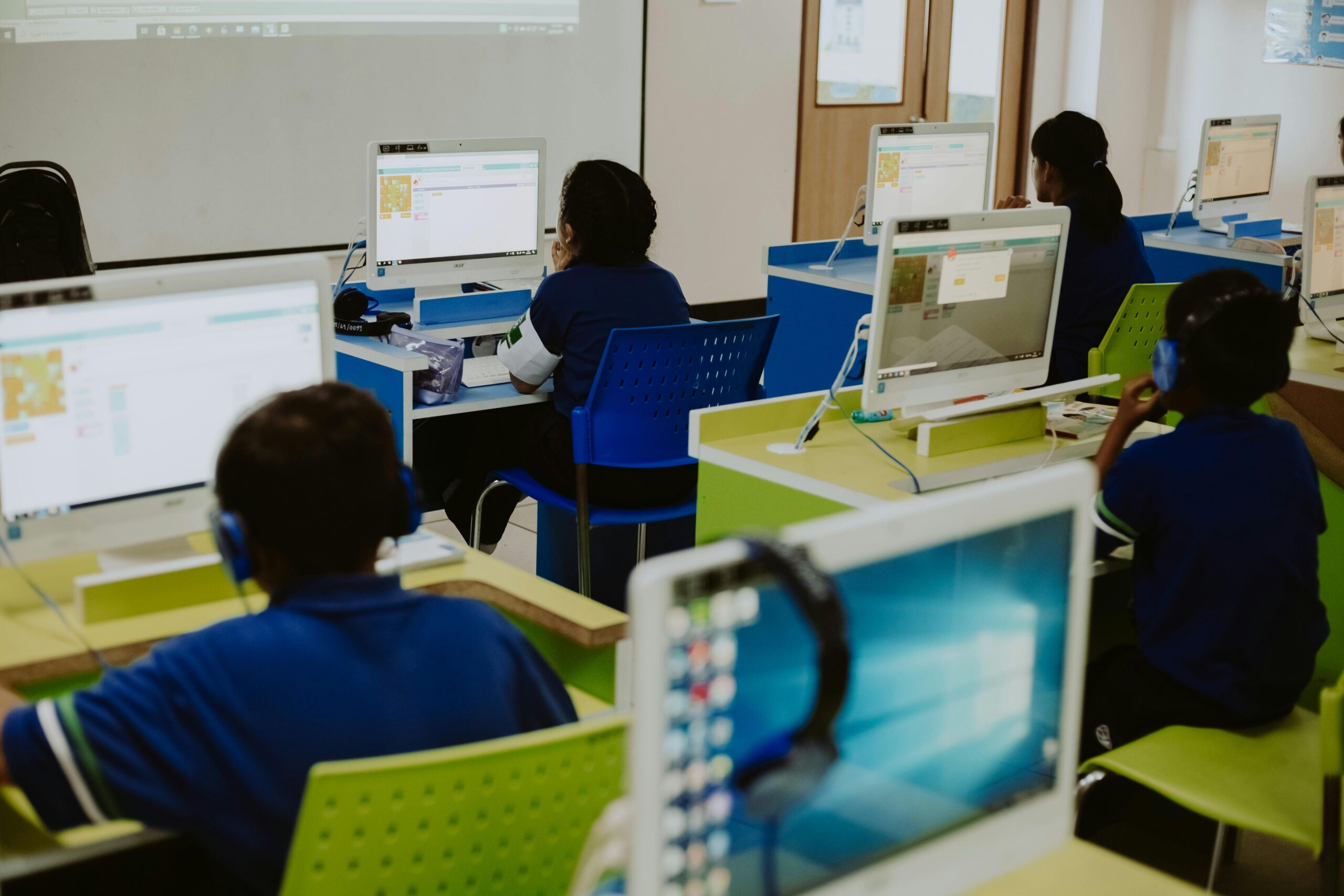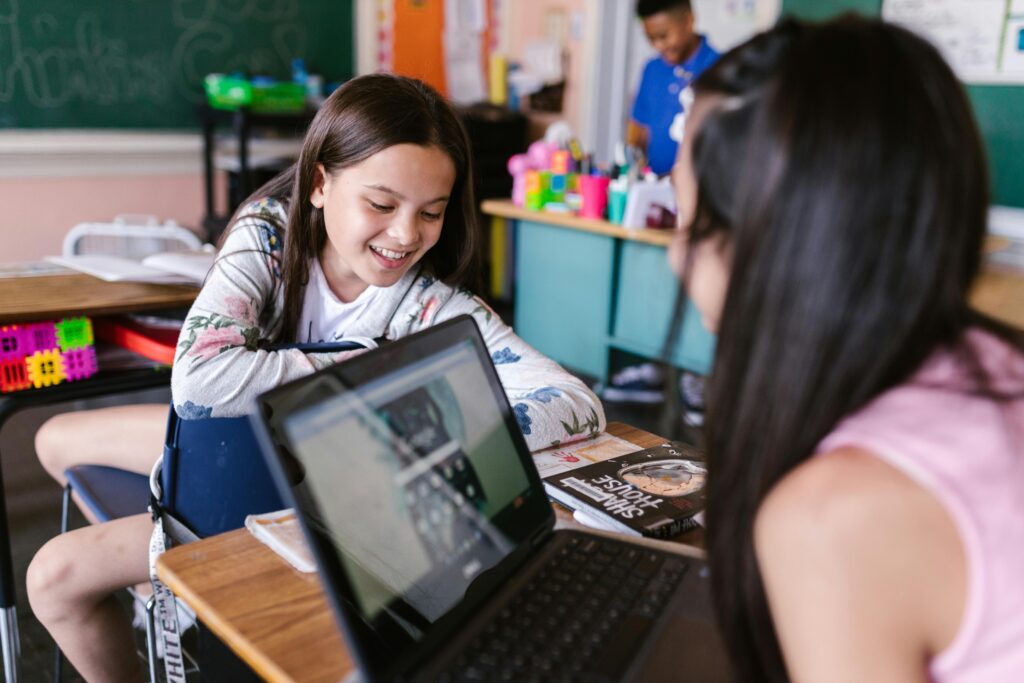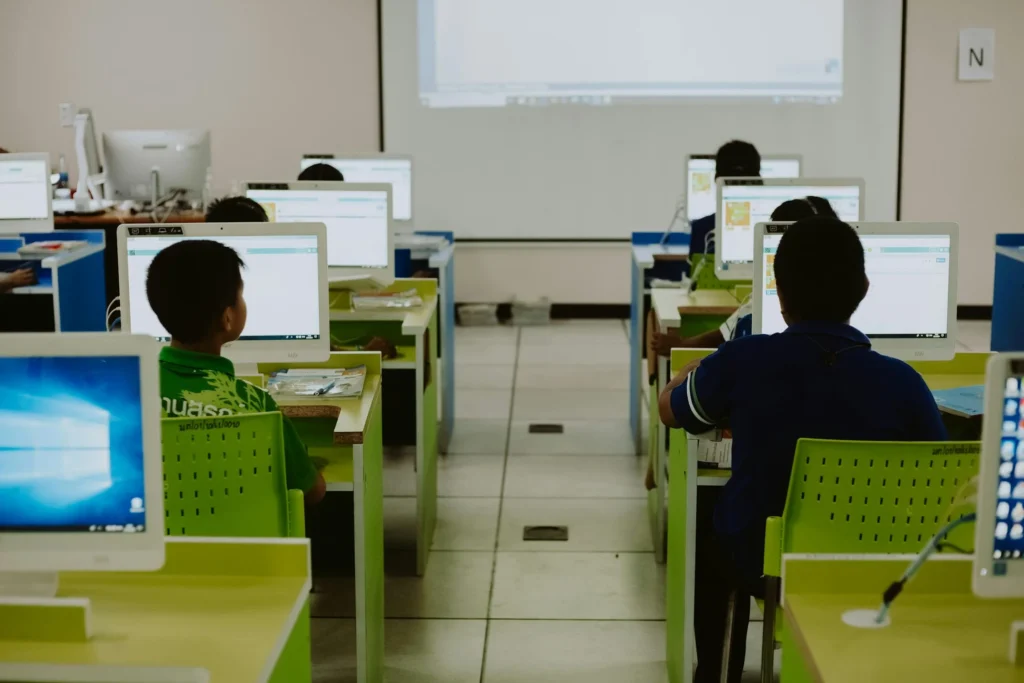
We offer a comprehensive curriculum developed by an international team, experienced teachers, and a focus on individualized and project-based learning.

We offer a comprehensive curriculum developed by an international team, experienced teachers, and a focus on individualized and project-based learning.

Coding is becoming an essential skill in modern education, especially in the Philippines. As technology reshapes industries and daily life, schools have the chance to prepare students for future opportunities by introducing coding programs. Starting a school coding initiative doesn’t have to be overwhelming.
With tools like Future Classroom, you gain access to a comprehensive platform that simplifies teaching and ensures engaging, meaningful lessons. Whether you’re a teacher, school administrator, or part of a learning institution, you’ll find resources that meet your needs and make coding education achievable.

With the rapid shift to a tech-driven economy, coding has become more than just a skill—it’s a tool that shapes futures. Schools in the Philippines have the opportunity to prepare students for emerging opportunities by integrating coding education into their curriculum. In this section, let’s explore why coding matters not just for careers but for personal development.
As industries grow more reliant on technology, the job market for coders and tech experts is expanding at an incredible pace. Did you know that even roles outside traditional tech fields now benefit from coding knowledge? From marketing to healthcare, automation and data management have become central to operations.
Here’s why coding is in such high demand:
The Philippines, with its young and dynamic workforce, has the chance to position itself as a global leader in tech-savvy professionals. But this requires foundational skills to be taught early in schools.
What does coding have to do with problem-solving? Think of coding as building blocks for the mind. When you write code, you’re essentially training your brain to think critically and work through challenges systematically.
Here’s how it happens:
By introducing coding in schools, students don’t just learn technology—they gain mental tools that apply to everyday challenges. It’s not just about creating the next app or game; it’s about preparing your brain to think in innovative ways, regardless of career path.
Let’s grow a generation of Filipino students who aren’t just passive consumers of technology but active creators equipped with critical thinking, problem-solving, and creativity. The foundation starts here.
Starting a coding program in your school can feel overwhelming at first, but with the right focus, you can create an engaging and impactful program for students. Whether you’re a teacher, administrator, or part of an educational institution, these steps will guide you through the process of integrating coding into your curriculum.

Before diving into a new program, it’s essential to evaluate your school’s current resources and plan for any additional needs. Think of this step as setting the foundation for your coding program.
Assessing your resources early helps avoid unpleasant surprises, allowing you to focus on the program’s long-term success.
When it comes to coding education, one size doesn’t fit all. Selecting the right curriculum and tools can shape how well students engage with and learn coding.
Your choice of curriculum and tools will determine how effectively your program meets student needs and achieves its goals.

A successful coding program hinges on the educators who deliver it. Teachers don’t need to be coding experts at the start, but they should feel confident guiding students through lessons.
Empowering educators with the right training ensures they are prepared to inspire students and sustain the program’s growth over time.
Building a strong coding program often requires collaboration. Partnerships with local organizations, coding schools, and even involving the community can transform a program from an idea into a thriving success. Here’s how you can make it happen.
Teaming up with established coding schools in the Philippines can provide instant access to expertise, resources, and structured curricula. These partnerships often include teacher training, free workshops, or discounted coding packages for students. Here are some great local coding schools you can explore:
These schools and organizations bring credibility and experience to your program. Partnering with them reduces the learning curve and ensures a high-quality coding education for your students.

The success of a school coding program doesn’t just rest on institutions—engaging the broader community and parents creates a support system that drives growth. Here are ways to involve them effectively:
Think of parents and the community as your biggest cheerleaders. With the right approach, they won’t just advocate for your program—they’ll actively invest time, energy, and resources to make it thrive.
Future Classroom provides a powerful solution to educators and schools aiming to start or enhance a coding program in the Philippines. Its platform is designed to simplify the complexities of teaching coding while delivering engaging, learner-focused content. Whether you are a teacher, school administrator, or running a learning institution, Future Classroom can help you establish coding programs effortlessly.
Future Classroom offers a comprehensive set of tools and resources tailored to support coding education. Think of it as your all-in-one coding toolkit designed to meet educators’ and students’ needs. Here’s what you can expect:
By providing these resources, Future Classroom ensures that all educators, regardless of their technical background, have the tools needed to run an effective and engaging coding program.

For any coding program to succeed, the teachers behind it need the skills and confidence to deliver lessons effectively. Future Classroom recognizes this and offers a variety of professional development options to help educators grow alongside their students.
Future Classroom’s commitment to professional development ensures that educators don’t just teach—they inspire. With their support, you can create a coding program that prepares students for a rapidly digitizing world.
To ensure the success of your school coding program, it’s critical to track progress and make calculated improvements. Measuring success in education is not limited to test scores; instead, it includes continuous learning, adaptability, and skill-building. This section focuses on two pillars for monitoring success: defining goals and metrics, and leveraging feedback to enhance outcomes.

Every successful program starts with clear and measurable goals. Without knowing your destination, it’s impossible to determine if you’re on the right path. Here’s how you can set meaningful objectives and track progress effectively:
By establishing defined goals and metrics, you’re creating a roadmap for both students and educators to follow. It offers tangible indicators of success and encourages accountability.

Feedback acts as the mirror reflecting the true progress of your coding program. Without it, you might overlook critical areas needing improvement. Here’s why and how to build a culture of feedback in your program:
By continuously setting goals and making improvements based on actionable feedback, you’ll ensure your school coding program remains relevant, engaging, and effective. The process builds not only a successful program but also a community of reflective learners and educators.
By incorporating coding, you prepare learners for active participation in a technology-driven world. Whether you’re a teacher or an administrator, taking the first steps now ensures students gain marketable skills and a mindset for problem-solving.
Future Classroom makes it easier to establish a successful coding program. With resources, training, and a user-friendly platform, you’ll bridge the gap between aspiration and implementation. Start transforming education today. Connect with Future Classroom and make coding a reality for your school.

FutureClassroom is Southeast Asia's largest coding platform for K-12, empowering students with essential skills in Web Development, Game Development, Python, and AI. Aligned with Cambridge and Pearson standards, our platform combines interactive learning and real-world projects to prepare young learners for a future driven by technology.
View all posts
FutureClassroom is Southeast Asia's largest coding platform for K-12, empowering students with essential skills in Web Development, Game Development, Python, and AI. Aligned with Cambridge and Pearson standards, our platform combines interactive learning and real-world projects to prepare young learners for a future driven by technology.
Get all the latest information, support and guidance about the cost of living with kindergarten.
Start Registration